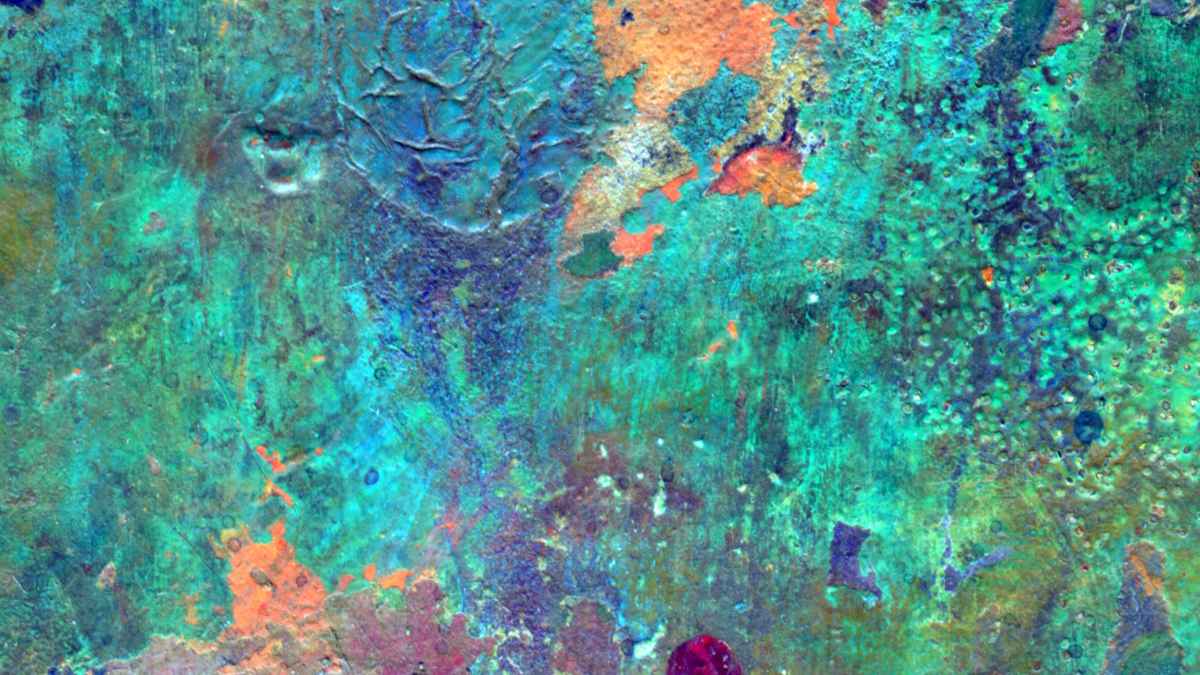
A Psychologist Explains How You Can Develop 'Synesthesia Skills'
You can train your mind to mimic the condition that tangles sensory information in extraordinary ways.

By Mark Travers, Ph.D. | January 4, 2024
Vincent van Gogh, Richard Feynman, Stevie Wonder. Each individual is renowned in their fields, having contributed to art and knowledge in remarkable ways. While each may seem far removed from one another, these individuals have something unique in common.
As van Gogh looked at artwork of his own and others, the visuals of brushstrokes evoked music in his ears. As Feynman developed fascinating equations in theoretical physics and quantum mechanics, he spoke of seeing the variables flying around in various colors. Despite being blind, Stevie Wonder speaks of music notes eliciting different colors in his mind's eye.
This phenomenon—the blending of different senses—is known as "synesthesia," and it is linked to high levels of intelligence and memory. While synesthesia was previously understood to be a perceptual phenomenon passed through genetics, newer research highlights that this experience can be acquired through training.
What Is Synesthesia?
Synesthesia is a neurological phenomenon where the stimulation of one sensory or cognitive pathway leads to involuntary experiences in another. Research from Frontiers in Psychology highlights the vast heterogeneity of synesthetic experiences, ranging from auditory, tactile and visual stimuli triggering colors, shapes and even flavors. Some examples of the various kinds of synesthesia include:
- Grapheme-color. The association of letters or numbers with specific colors.
- Sound-color. Perception of colors in response to different sounds or music.
- Number-form. Seeing numbers in certain spatial locations, often forming a mental map.
- Spatial sequence. Seeing sequences of days, months or numbers as occupying certain locations within space.
- Lexical-gustatory. Association of words with specific tastes.
- Ticker-tape. Seeing spoken words as a visual ticker-tape in the mind's eye–like subtitles within one's vision.
- Chromesthesia. Seeing certain colors in response to different musical keys or notes.
The myriad manifestations of synesthesia open up a realm of intriguing implications for our understanding of human cognition and perception. Beyond the fascinating individual experiences, the phenomenon challenges traditional boundaries between sensory modalities, suggesting a profound interconnectedness within the brain.
The Benefits Of Synesthesia
In recent years, a growing body of research has shed light on the potential cognitive advantages associated with synesthesia, particularly in the domain of memory. A study published in PLOS ONE delves into the comparison between synesthetes and their non-synesthetic counterparts, revealing a notable and consistent memory advantage among individuals with synesthetic experiences.
Notably, the study uncovers that grapheme-color synesthetes, those who associate letters or numbers with specific colors, exhibit enhanced recognition memory specifically for color stimuli. This nuanced finding suggests that the benefits of synesthesia are not universally applied but are intricately tied to the specific type of synesthetic experience an individual possesses.
While the cognitive advantages of synesthesia are increasingly recognized, it is equally important to acknowledge the potential challenges that may accompany these perceptual gifts.
This complexity is underscored by research, such as the study on ticker-tape synesthesia published in Cortex. The findings suggest that while ticker-tape synesthetes excel in certain cognitive tasks related to orthographic working memory, the interplay of these sensory experiences can introduce unique challenges. In particular, synesthetes could be distracted by an overload of sensory experiences.
Can Synesthesia Be Learned?
Traditionally considered a congenital condition, a study published in Scientific Reports suggests an alternative perspective: that synesthesia might be underpinned by repeated exposure to combined perceptual features during key developmental stages. This opens the door to the idea that, to some extent, synesthesia can be learned.
According to the research, adults that engaged in an extensive training regime exhibited behavioral and physiological markers for grapheme-color synesthesia, challenging the notion that synesthesia is exclusively an inborn trait.
A study from Frontiers in Psychology highlights that specific synesthetic associations may be related to prior experiences, further challenging the notion of complete congenital predisposition. Notably, researchers propose associative learning as a critical mechanism in the development of synesthetic experiences, highlighting that synesthesia can potentially be learned through appropriate training procedures.
To embark on this fascinating journey of acquiring synesthetic experiences, individuals might consider the following training methods:
- Grapheme-color associations. Start by incorporating simple memory tasks into your routine, reinforcing specific letter-color associations. Make it a daily practice to consciously link letters or numbers to distinct colors. Visualize the alphabet and numerical sequences as a vibrant palette, creating a personalized and colorful chart in your mind, and enhancing your memory while adding a creative and visually stimulating dimension to your daily cognition.
- Sound-color associations. Embark on a playful journey of sound and color by associating different musical tones or sounds with specific hues. To make these connections stick, use mnemonic devices that resonate with you. Let each note paint a vivid picture in your mind, transforming your auditory experience into a colorful symphony, and enhancing your cognitive flexibility by forging unique cross-sensory connections.
- Number-form visualization. Take a moment to develop a mental map associating numbers, days of the week or months with specific spatial locations. Picture each residing in its unique space and reinforce this visualization through simple spatial memory exercises. Watch as your mental map evolves, providing a visually compelling way to navigate numerical sequences effortlessly. This practice not only sharpens your spatial memory but also offers a creative and efficient tool for tackling numerical tasks in your daily life.
Conclusion
As we explore the spectrum of synesthesia, we discover not only the marvels of the human mind, but also the possibility for individuals to embark on a deliberate journey of sensory exploration and self-discovery. By seamlessly integrating training techniques into one's daily cognitive routine, a gateway opens to enhanced memory, creative thinking and multisensory engagement. This process not only enriches your perceptual world, but also offers a unique opportunity for self-discovery and a deeper understanding of the intricate workings of the mind.
A similar version of this article can also be found on Forbes.com, here.
